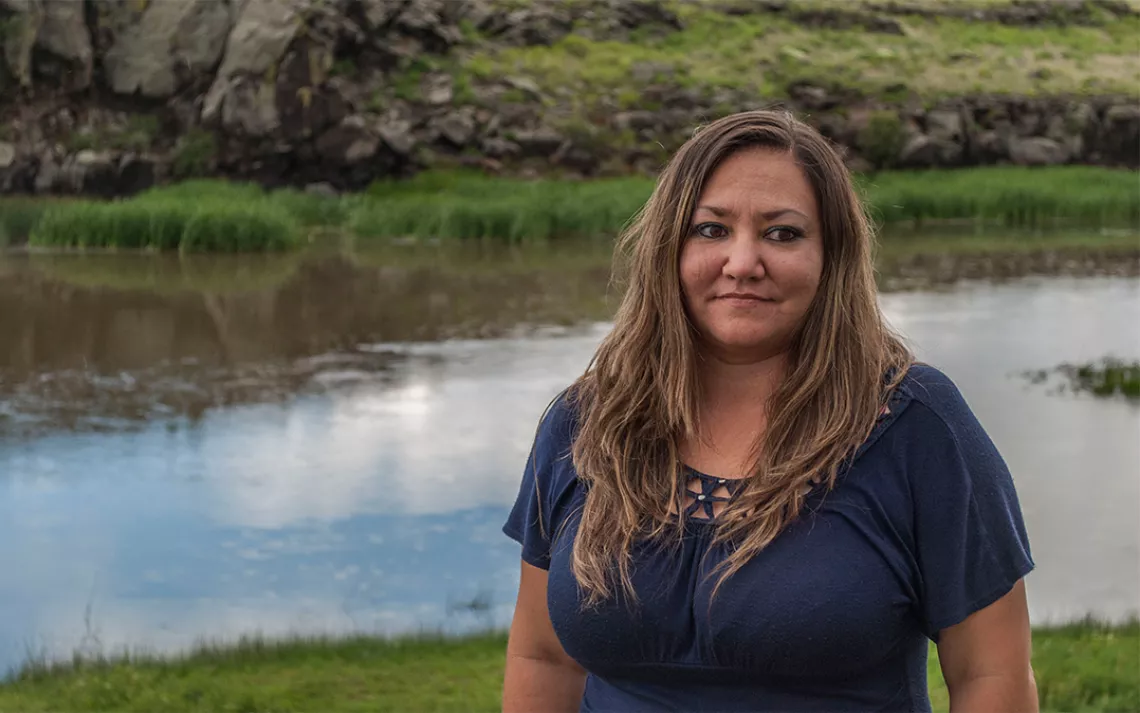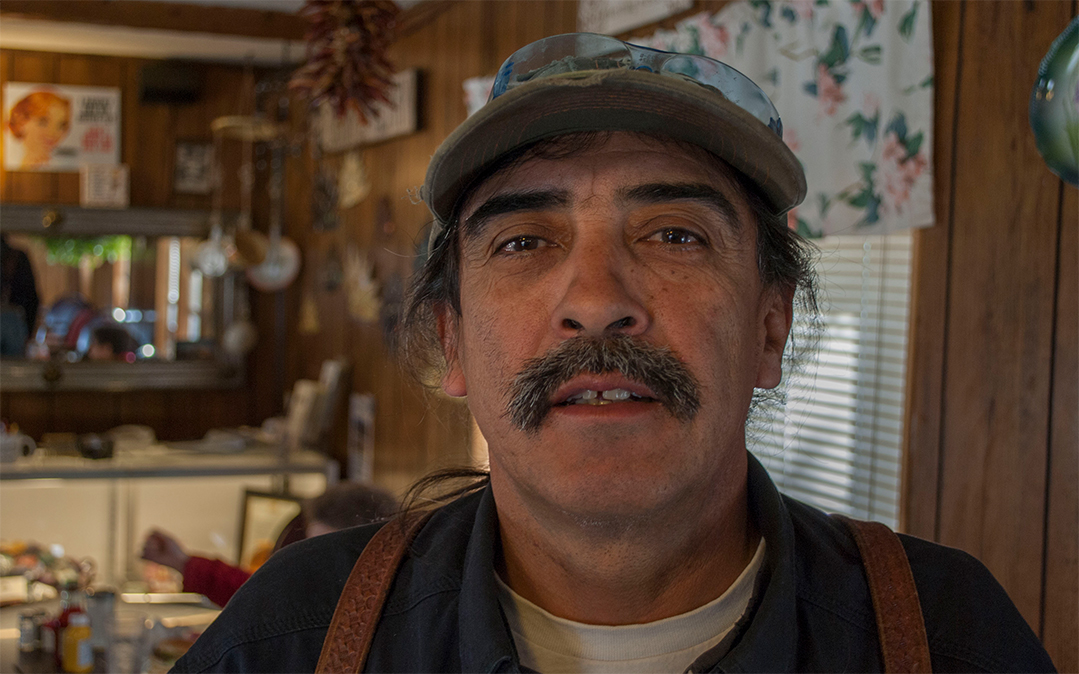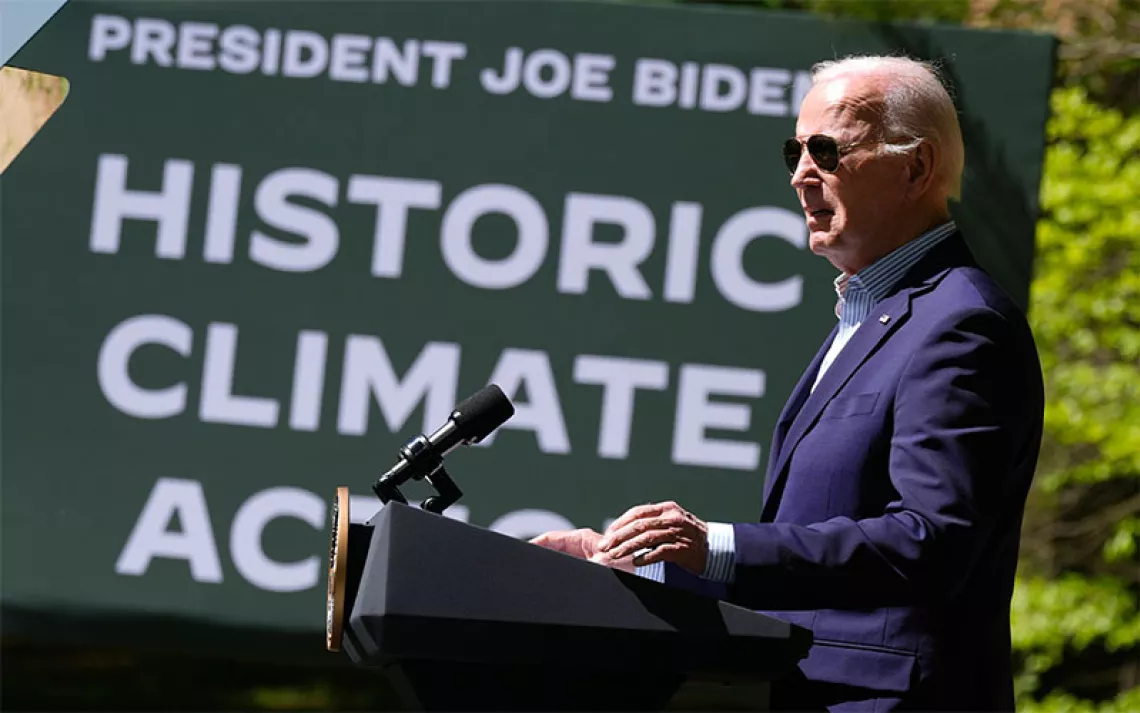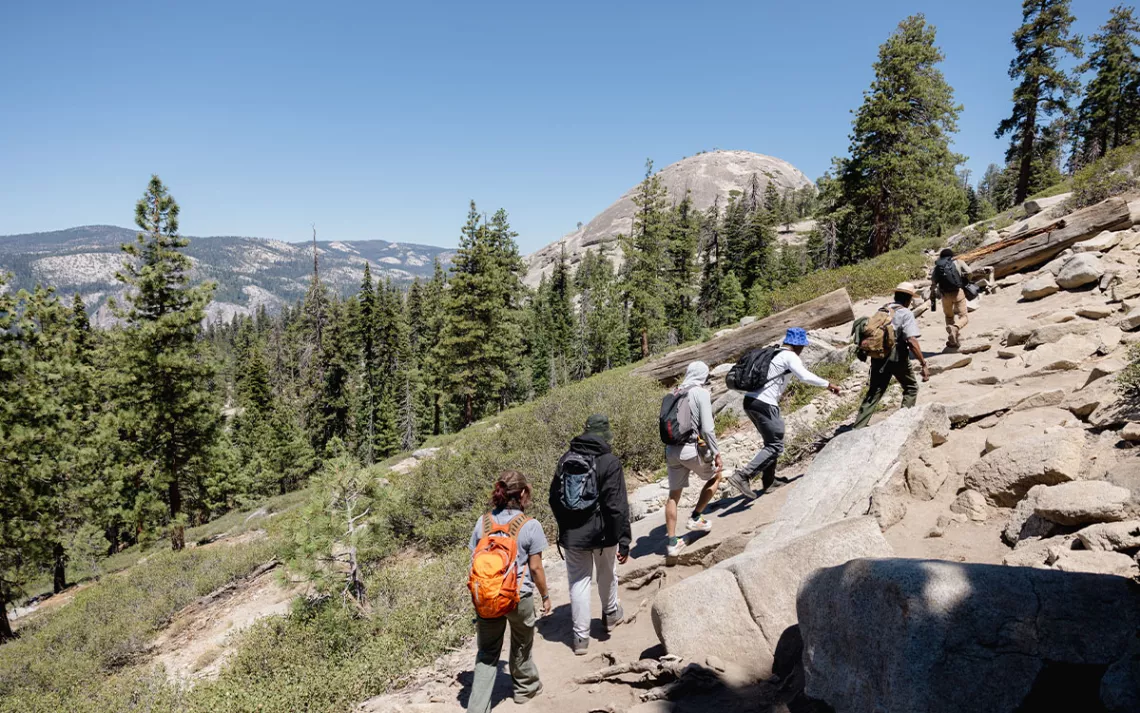Meet the Rural Advocates for Keeping Federal Lands Just the Way They Are
While some in Congress look to sell off public lands, rural communities push back

Anna Lee Vargas
|Photos by Jim O'Donnell
Jimmy Sanchez, the 55-year-old farmer and mayordomo of the Acequia de la Sierra de Holman Arriba, tells me stories of the old days. His tales are laced with old New Mexico Spanish as we wade through ankle-deep snow up one of the brazos, or branches, of the ancient irrigation system. “If there is water, the people are happy,” he says. “Wilderness protects the water.”
Opponents of public lands claim that rural communities are economically harmed by wilderness designations, national monuments, and public lands in general. They claim that if only those public lands could be sold to private interests or put under state control, economic growth would take off. Sanchez, whose family has made a living on the border of public lands for generations, thinks differently.
The acequias of New Mexico are community-run irrigation networks that date back to when the state was under Spanish control. They’ve persisted due to hundreds of years of collective effort—as mayordomo, Sanchez is taking his turn as elected “ditch boss” of the acequia, responsible for organizing the ditch cleaning in the spring and allocating the water to 34 families, who grow everything from grapes to plums to oats, alfalfa, and wheat along its 26 miles. From the farms, the acequia dumps into the Mora River, feeding valuable wildlife habitat.
 Jimmy Sanchez But just because something has endured for hundreds of years doesn’t mean that it can’t be taken away.
Jimmy Sanchez But just because something has endured for hundreds of years doesn’t mean that it can’t be taken away.
The Acequia de la Sierra de Holman Arriba begins as a trickle of water dancing out from the base of melting snow in the high sierra of northern New Mexico, well within the Pecos Wilderness. Holman, the tiny northern New Mexico community of double-wide trailers and adobe structures where Sanchez lives, sits on the northern edge of the 223,667-acre Pecos Wilderness. Every year, it seems to Sanchez, he has to confront another legislative push to muscle in on public land.
Sometimes it’s at the federal level. Other times the move is at the state legislature, or even from within the community, by people who hope to profit if lands are privatized. In the past, acequia waters have been taken from members and given over to larger landowners or developments; as a result, the acequias have grown politically savvy at fighting such moves. “If you don’t protect what you have, they’ll come and take it from you,” says Sanchez.
Right now, the battle for control over public lands is fraught at every level. Earlier this month, Rob Bishop (R, Utah) introduced a $50 million plan to push state takeover of public lands. A recent report produced by the Center for Biological Diversity identified 132 bills in the last five years that were introduced at the federal level, seeking to reduce nationwide control over public lands. The primary sponsors of those bills—nine House lawmakers and six senators—were all from western states.
Recently, several western state legislatures have seen bills introduced that would authorize takeovers of publicly owned, federally managed lands. Since 2013, the Wyoming state legislature has debated nine different bills proposing the transfer of lands to state or private hands. In Utah, congressional representatives have pushed a $14 million lawsuit to force a transfer of public lands to the state. In February, Utah representative Jason Chaffetz introduced a bill in Congress to begin the disposal of lands including the new Bears Ears National Monument, though he later withdrew the bill under immense public pressure.
All this doesn’t sit well with Anna Lee Vargas. The seventh-generation resident of Conejos County, Colorado, opposes any plan to privatize federally managed lands or to turn them over to the state. “We’ve used these lands for generations. My family ranches. We collect seeds and herbs for traditional foods and cures. We hunt; we fish. Our traditions would be lost if we didn’t have access to public lands.”
In Conjeos County, agriculture and ranching are the main economic generators, and both depend on public lands, says Vargas. As in Homan, irrigation water for the farms comes from the watersheds managed by the U.S. Forest Service, while a large amount of ranching takes place on lands managed by the BLM. The second-largest economic generator in the county is tourism, which is also dependent on public lands. If federal lands were transferred to the state, says Vargas, ranchers like herself could lose access, since citizens have less of a say in how state lands are managed—if it made more economic sense to lease the land for mineral development, the state could do that without involving citizens in the decision-making process. “And if it was private,” says Vargas, “we’d for sure have no access.”
Sanchez and Vargas are far from alone in their convictions. In Wyoming, local hunters recently helped shoot down two proposals in the state legislature that laid the groundwork for transfer of federally managed lands to the state. In deep-red Idaho, several thousand people recently came out to protest such moves. On a recent Tuesday morning in Taos, New Mexico, over 400 people rallied in support of public lands.
Tom Page, who ranches a mixture of Forest Service and BLM land in Idaho’s Pahsimeroi Valley, understands some of the frustration that people feel about the feds. “The administrative and legislative barriers to doing something as simple as putting up a fence can be maddening,” he explains. Locals wish they had more input, and certainty about how land-management decisions are made. But, Page says, “I don’t see getting rid of public lands as a real answer.” Part of the problem, he says, is that the federal agencies are underfunded. “There is an intent by certain folks to squash funding for the land-management agencies to make those agencies look incompetent.”
 Richard Fresquez The biggest problem, says Richard Fresquez, is misinformation. “Fake news was invented here,” he laughs over a plate of tacos at Kristy’s Korner Kafe back in Holman, New Mexico. The former army veteran operates a small lumber mill and runs 20 head of cattle in the Pecos Wilderness. “We’ve been grazing up there since forever,” Fresquez says. “No roads and good grass is good for my cows. These lands improve our quality of life.”
Richard Fresquez The biggest problem, says Richard Fresquez, is misinformation. “Fake news was invented here,” he laughs over a plate of tacos at Kristy’s Korner Kafe back in Holman, New Mexico. The former army veteran operates a small lumber mill and runs 20 head of cattle in the Pecos Wilderness. “We’ve been grazing up there since forever,” Fresquez says. “No roads and good grass is good for my cows. These lands improve our quality of life.”
Both Fresquez and Sanchez believe that there is an organized push, among people who would like to see public lands turned over to the states, to confuse people whose livelihoods depend on public land. They do this by spreading stories that the government is going to ban hunting or take away water access. “They go around saying things they know aren’t true. Their goal is to keep people confused. That’s no good.”
“We got to protect these lands,” says Sanchez. “For everybody. People come from all over to hike here and take pictures. That’s beautiful. For us here we need to let the rivers flow. We need the clean water these mountains and valleys produce.”
 The Magazine of The Sierra Club
The Magazine of The Sierra Club



